Make the best use of Scientific Research and information from our 700+ peer reviewed, Open Access Journals that operates with the help of 50,000+ Editorial Board Members and esteemed reviewers and 1000+ Scientific associations in Medical, Clinical, Pharmaceutical, Engineering, Technology and Management Fields.
Meet Inspiring Speakers and Experts at our 3000+ Global Conferenceseries Events with over 600+ Conferences, 1200+ Symposiums and 1200+ Workshops on Medical, Pharma, Engineering, Science, Technology and Business
Case Report Open Access
Intraventricular Nicardipine for Reversible Vasospasm Related to Cryptococcal Meningovasculitis
| Shaheryar Hafeez1* and Asma Zakaria2 | |
| 1Department of Neurology, Wexner Medical Center at The Ohio State University, Columbus, Ohio, USA | |
| 2Department of Neurology, The Metro Health System, Cleveland, Ohio, USA | |
| Corresponding Author : | Shaheryar Hafeez Division of Cerebrovascular Disease and Neurosciences Critical Care Department of Neurology, The Ohio State University College of Medicine 333 West 12th Avenue, Third Floor, Columbus, Ohio 43210, USA Tel: 1 614-292-7137 E-mail: Shaheryar.hafeez@osumc.edu |
| Received: June 27, 2015 Accepted: July 18, 2015 Published: July 23, 2015 | |
| Citation: Hafeez S, Zakaria A (2015) Intraventricular Nicardipine for Reversible Vasospasm Related to Cryptococcal Meningovasculitis. J Neuroinfect Dis 6:185. doi:10.4172/2314-7326.1000185 | |
| Copyright: © 2015 Hafeez S, et al. This is an open-access article distributed under the terms of the Creative Commons Attribution License, which permits unrestricted use, distribution, and reproduction in any medium, provided the original author and source are credited. | |
| Related article at Pubmed, Scholar Google | |
Visit for more related articles at Journal of Neuroinfectious Diseases
Abstract
Basilar meningovasculitis causing diffuse vasospasm is an under recognized complication of CNS cryptococcal infection. We report the case of cryptococcal meningitis causing severe vasospasm and its successful treatment with intraventricular (IVT) nicardipine.
| Keywords |
| Cryptococcal meningitis; Vasospasm; Intraventricular nicardipine |
| Introduction |
| Cryptococcal meningitis is the most common cause fungal meningitis worldwide. Clinically, it is characterized by meningismus, fever, focal neurologic deficits, and headaches caused by a widespread inflammation of the meninges [1]. The effects of the aforementioned cause the common sequella of cryptococcal meningitis: elevated intracranial pressure (ICP), communicating hydrocephalus, and cognitive deficits. However, the widespread meningeal inflammation can also cause meningovascular compromise leading to vasculitis and vasculopathy, which ultimately leads to cerebral ischemia and stroke. Cerebral ischemia caused by vasospasm is a well-recognized complication of subarachnoid hemorrhage and its regular surveillance is the standard of care in patients with subarachnoid hemorrhage, however, vasospasm is grossly under-recognized and understood in the context of meningitis. |
| Case |
| A 28-year-old immunocompetent male diagnosed with Cryptococcal meningitis, treated with one month of amphotericin B, flucytosine, and serial lumbar punctures, presented with lethargy and persistent dysmetria and dysarthria. CSF examination showed clearance of the Cryptococcus fungus but ICP remained high; therefore, an external lumbar drain was placed. After an initial two-day improvement, the patient became lethargic and had alternating episodes of hemiplegia, which progressed to a comatose state and bilateral extensor posturing. Continuous EEG monitoring showed diffuse slowing and no seizure activity. An extra-ventricular drain (EVD) was placed for ventricular drainage and intracranial pressure (ICP) monitoring; however, pressures consistently remained less than 20 mm H2O. MRI brain revealed bilateral cerebellar ischemia and leptomeningeal enhancement. Diffuse vascular spasm was suspected on computed tomography angiography (CTA). This finding prompted an unsuccessful attempt at angiographic spasmolysis of the bilateral ICAs using intra-arterial verapamil. Initial transcranial doppler (TCD) showed severe right (186 cm/s) and left (220 cm/s) middle cerebral artery (MCA) vasospasm. High-dose methylprednisolone and IVT (Intraventricular/intrathecal) nicardipine 4 mg/2 mL every 8 hours were initiated. One hour following IVT nicardipine administration, the MCA velocities improved on the right (110 cm/s) and left (83 cm/s). Over the next several days, the patient showed marked improvement, He was extubated, communicative, and tolerated a regular diet. A total of 12 doses of nicardipine were administered. A follow up CTA showed no signs of vasospasm. The patient was discharged to a rehabilitation facility on oral antifungals and nimodipine (Figures 1-6). |
| Discussion |
| Cryptococcal meningitis is a common fungal infection that has significant neurologic morbidity, most commonly from increased ICP [1]. This case highlights the importance of recognizing cerebrovascular complications in meningitis and its possible treatment. The incidence of cerebrovascular complications of bacterial meningitis is estimated to be approximately 15% (this study was done in the pre-MRI era, and the true incidence is probably much higher) and the incidence of cerebrovascular complications from fungal meningitis is unknown [2]. The pathophysiology of cerebral ischemia and stroke in meningitis is unknown, however, proposed mechanisms include – vascular inflammation and with a humoral response causing infarcts [3] perivascular inflammation causing vasculitis, or reversible vasospasm [2]. |
| Although there are numerous reports of stroke in the setting of meningitis, there were only three reported cases of cerebral vasospasm induced by meningitis in the literature; one due to cocciodiomycosis and the other two by staphylococcus aureus [2,4,5]. Fortunately, the authors reported that all three cases were successfully treated by a combination of transluminal angioplasty, intra-arterial vasodilator therapy, or other endovascular techniques [4,6,7]. Our endovascular neurosurgeons considered transluminal angioplasty; however, it was deemed too unsafe due to concerns of blood vessel friability and the caliber of the vessels. Therefore, as our patient was rapidly deteriorating and did not respond to our arterial vasodilator therapy - intra-arterial verapamil - we sought other means of treatment. |
| A previous case series had established the safety for using IVT nicardipine therapy in refractory vasospasm in patients with aneurysmal subarachnoid hemorrhage [8]; therefore, we extrapolated these study findings to our patient with refractory vasospasm secondary to cryptococcal meningitis. With informed consent from the family, the procedure was done as follows: 10 mL of CSF was removed via the proximal port of the ventriculostomy and replaced with 4 mg/2 mL of nicardipine followed by 8 ml of sterile saline, the proximal port was clamped for 1 hour, after which it was opened to the baseline drainage level. The patient tolerated the treatment with no side effects. We were fortunate to have success with IVT nicardipine as salvage therapy for refractory vasospasm as demonstrated by the rapid improvement in TCD velocities within 1 hour of drug administration and sustained improvement over subsequent days. |
| Cerebral vasospasm may contribute to the occurrence of stroke in patients with meningitis and may be more common than initially perceived. It may be prudent to periodically evaluate the cerebral vasculature of patients with meningitis accompanied by a fluctuating or poor neurologic examination with TCD or cerebral angiograms. Endovascular and intrathecal therapies may be safe and beneficial for these patients and IVT nicardipine can be considered as an option for the treatment of refractory vasospasm regardless of the underlying etiology. |
References
- Perfect JR, Dismukes WE, Dromer F, Goldman DL, Graybill JR, et al. (2010) Clinical Practice Guidelines for the Management of Cryptococcal Disease: 2010 Update by the Infectious Diseases Society of America. Clin Infect Dis 50: 291-322.
- Pfister HW, Borasio GD, Dirnagl U, Bauer M, Einhaupl KM (1992) Cerebrovascular complications of bacterial meningitis in adults. Neurology42: 1497-1504.
- Tunkel A, Scheld WM (1993) Pathogenesis and Pathophysiology of Bacterial Meningitis. Clinical Microbiology Reviews 6: 118-136.
- Taqui A, Koffman L, Hui F, Gomes J, Hussain MS, et al. (2014) Intra-arterial vasodilator therapy for parainfectious cerebral vasospasm.J NeurolSci 340: 225-229.
- Hu YC, Newman CB, Bristol R, McDougall CG, Albuquerque FC (2011) Percutaneoustransluminal angioplasty in a patient with vasospasm secondary to coccidioidal meningitis: case report and review of the literature. J NeuroIntervSurg 3: 62-65.
- Klein M, Koedel U, Pfefferkorn T, Zeller G, Woehrl B, et al. (2011) Arterial cerebrovascular complications in 94 adults with acute bacterial meningitis. Crit Care 15: R281.
- Buechner D, Gelfand MS, Cleveland KO (2012)Percutaneoustransluminal angioplasty in a patient with vasospasm due to staphylococcal meningitis. J Neurosurg 117: 103-106.
- Goodson K, Lapointe M, Monroe, T, Chalela JA (2008) IntraventricularNicardipine for Refractory Cerebral Vasospasm after Subarachnoid Hemorrhage. Neurocrit Care 8: 247-252.
Figures at a glance
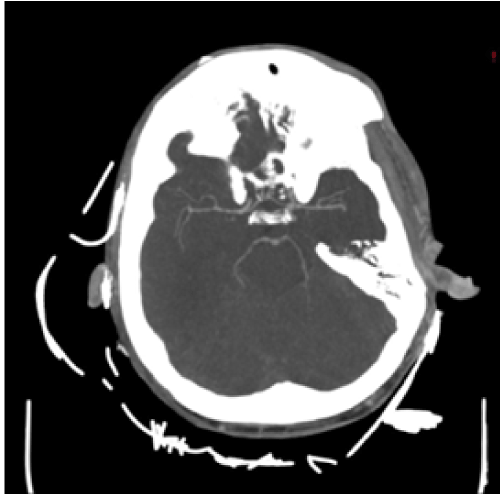 |
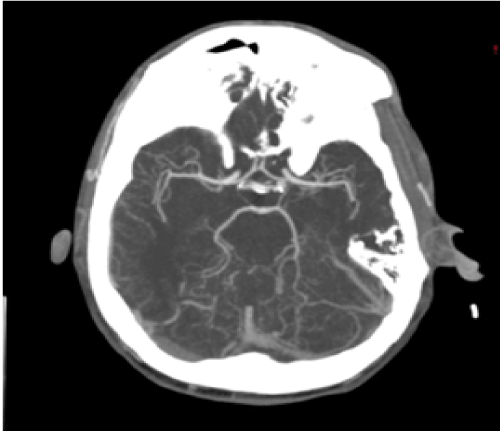 |
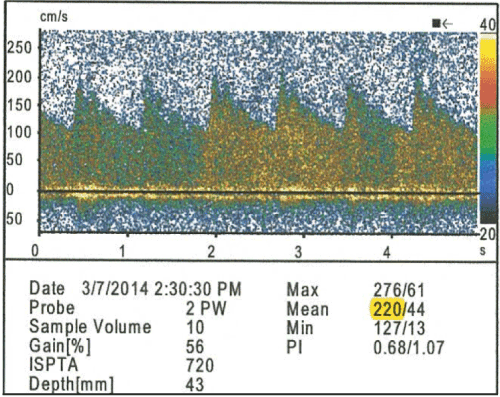 |
| Figure 1 | Figure 2 | Figure 3 |
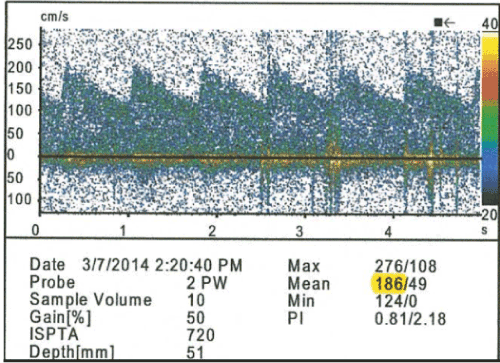 |
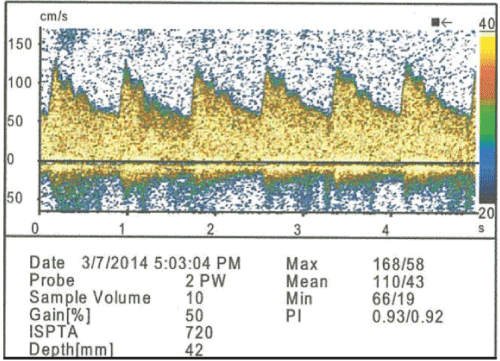 |
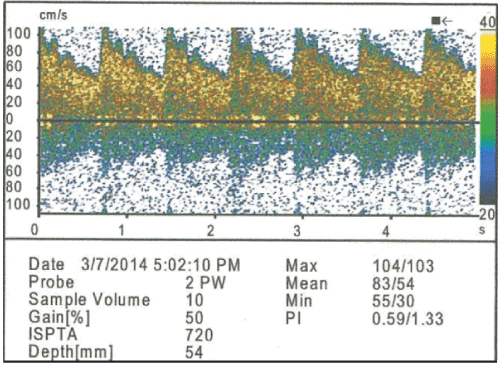 |
| Figure 4 | Figure 5 | Figure 6 |
Post your comment
Relevant Topics
- Bacteria Induced Neuropathies
- Blood-brain barrier
- Brain Infection
- Cerebral Spinal Fluid
- Encephalitis
- Fungal Infection
- Infectious Disease in Children
- Neuro-HIV and Bacterial Infection
- Neuro-Infections Induced Autoimmune Disorders
- Neurocystercercosis
- Neurocysticercosis
- Neuroepidemiology
- Neuroinfectious Agents
- Neuroinflammation
- Neurosyphilis
- Neurotropic viruses
- Neurovirology
- Rare Infectious Disease
- Toxoplasmosis
- Viral Infection
Recommended Journals
Article Tools
Article Usage
- Total views: 14450
- [From(publication date):
August-2015 - Apr 27, 2025] - Breakdown by view type
- HTML page views : 9883
- PDF downloads : 4567
